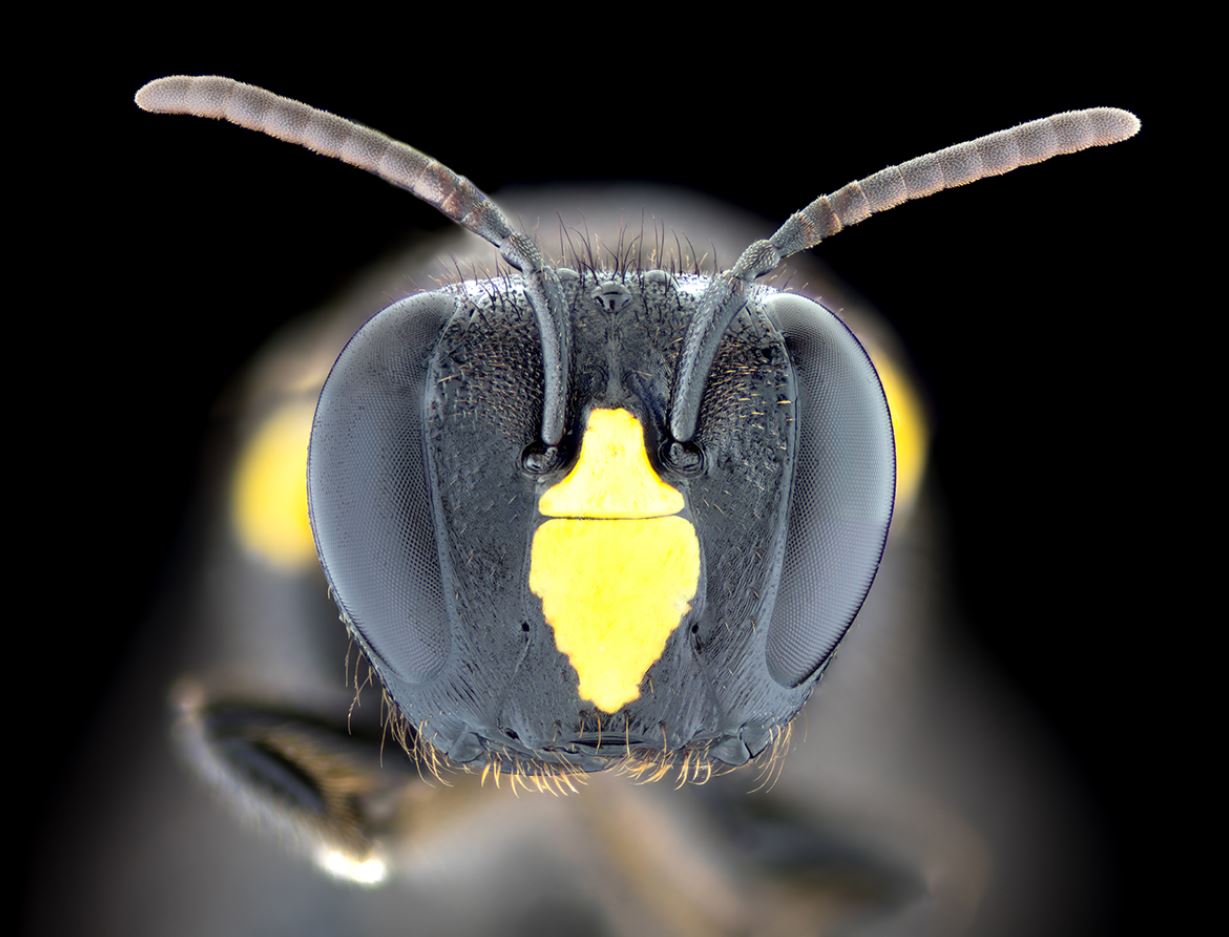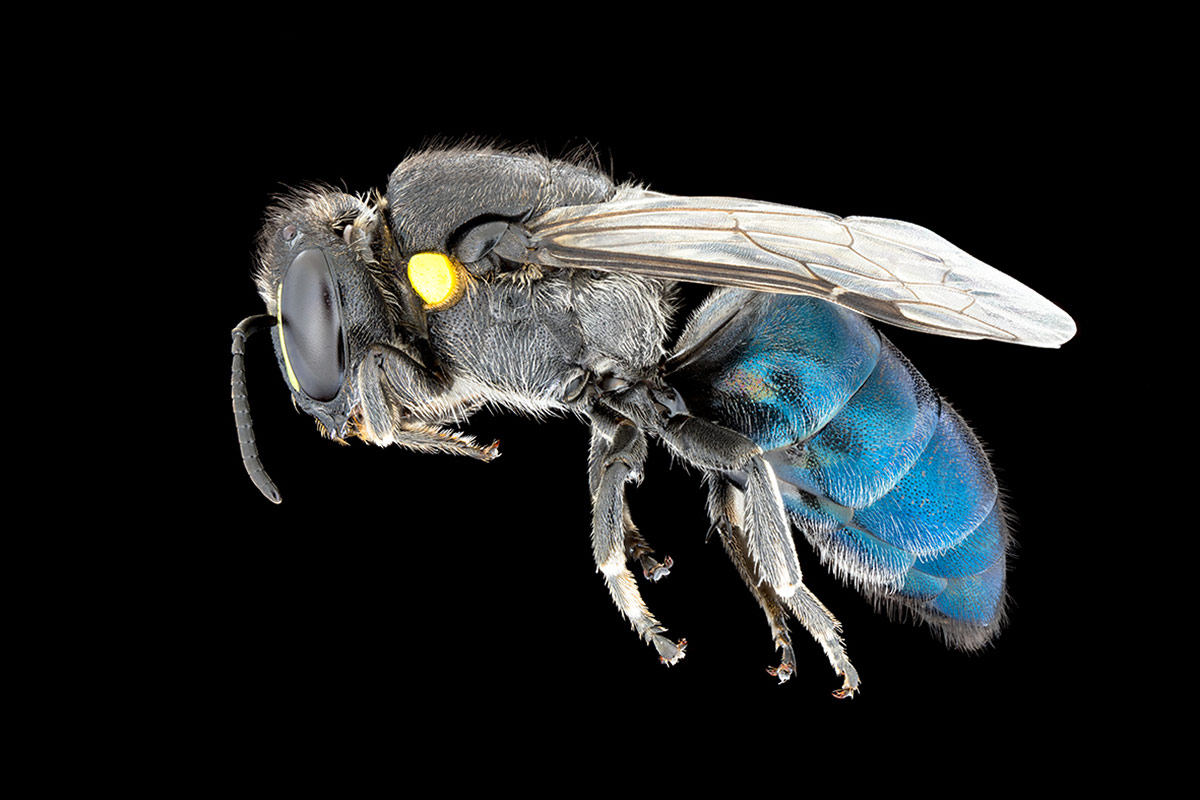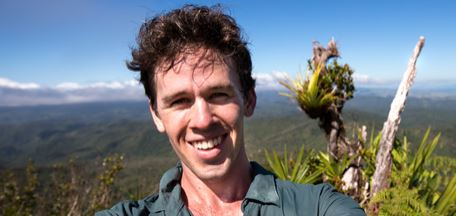
Dramatic photos by Flinders natural sciences researcher James Dorey put a spotlight on an estimated 2000-3000 species of bees in Australia.
A new book entitled Bees of Australia: A Photographic Exploration (CSIRO Publishing, $49.99) explores topics such as social behaviour, threats, pollination and how to attract bees to your garden.
Talented macro-photographer James Dorey, a PhD candidate at the College of Science and Engineering, is excited to be a part of the recording and scientific investigation of known and yet-to-be-described native bees – many to be found in suburban backyards.

In fact, it was during his time as an undergraduate in ecology and zoology when bees in his backyard ‘stung’ his interest.
“I went to a tree just outside my house – a melaleuca tree that was about five or six metres tall – and started collecting bees,” he told the CSIRO news.
“In the one tree, I found 33 different species of native bees. Before then I’d only ever heard of the blue-banded bee and, of course, the honeybee.
“I didn’t know there was so much diversity in native bees, and it made me wonder if anyone else knew.”
During the making of the book, a new species of Exoneura sp. was discovered in South Australia and is in the process of being named.
Undescribed species from NSW and NT are included, along with a bee found in Tasmania that was otherwise only known around Sydney.
Other photos include a “stunning male golden green carpenter bee” Xylocopa (Lestis) aerates now only found on Kangaroo Island, a “pretty female Lipotriches (Austronomia) australica, a buzz pollinator which uses its abdomen to vibrate and dislodge pollen,” and another bee found in SA that resembles a European honey bee, Brachyhesma houstoni, named after Dr Terry Houston who collected the original specimens in 1964.

Australia currently has more than 1600 described and named bee species, with many under threat due to habitat loss, exotic species, pesticides and climate change.
The introduced European honeybee also contributes to pollinating crops, but can disrupt the habitats of many of our native bees, birds and mammals.
Fast facts on native bees:
- Rather than congregating in hives, many of Australia’s bees live alone or in small groups. Some live in hollow twigs and stems, while others burrow into the ground. Certain species of male bees like to roost and hang out on ‘bachelor pads’.
- Australia is home to the world’s smallest bee, less than 2mm in length.
- Some male bees will fight to the death to mate with a female. When the males mate their genitals will lock into place and can be left within the queen, which must then seek the help of her workers to remove them.
- Only female bees will sting – they use a modified egg-laying appendage known as an ovipositor.
Bees of Australia was launched at the Pacific Cultures Gallery at the South Australian Museum on 11 October 2018, and is available for purchase online.
At Flinders University, supervised by Associate Professor Michael Schwarz, James has also moved offshore to study bees, wasps, butterflies and other insects of Fiji as part of field work funded by an Australian Government New Colombo Mobility Plan Program project.
A bee photo by James Dory appeared on the cover of Australian Geographic last year. See some more at www.jamesdoreyphotography.com.au. He is undertaking a PhD on the evolution, taxonomy and ecology of Australian native bees at Flinders University and the South Australian Museum.


